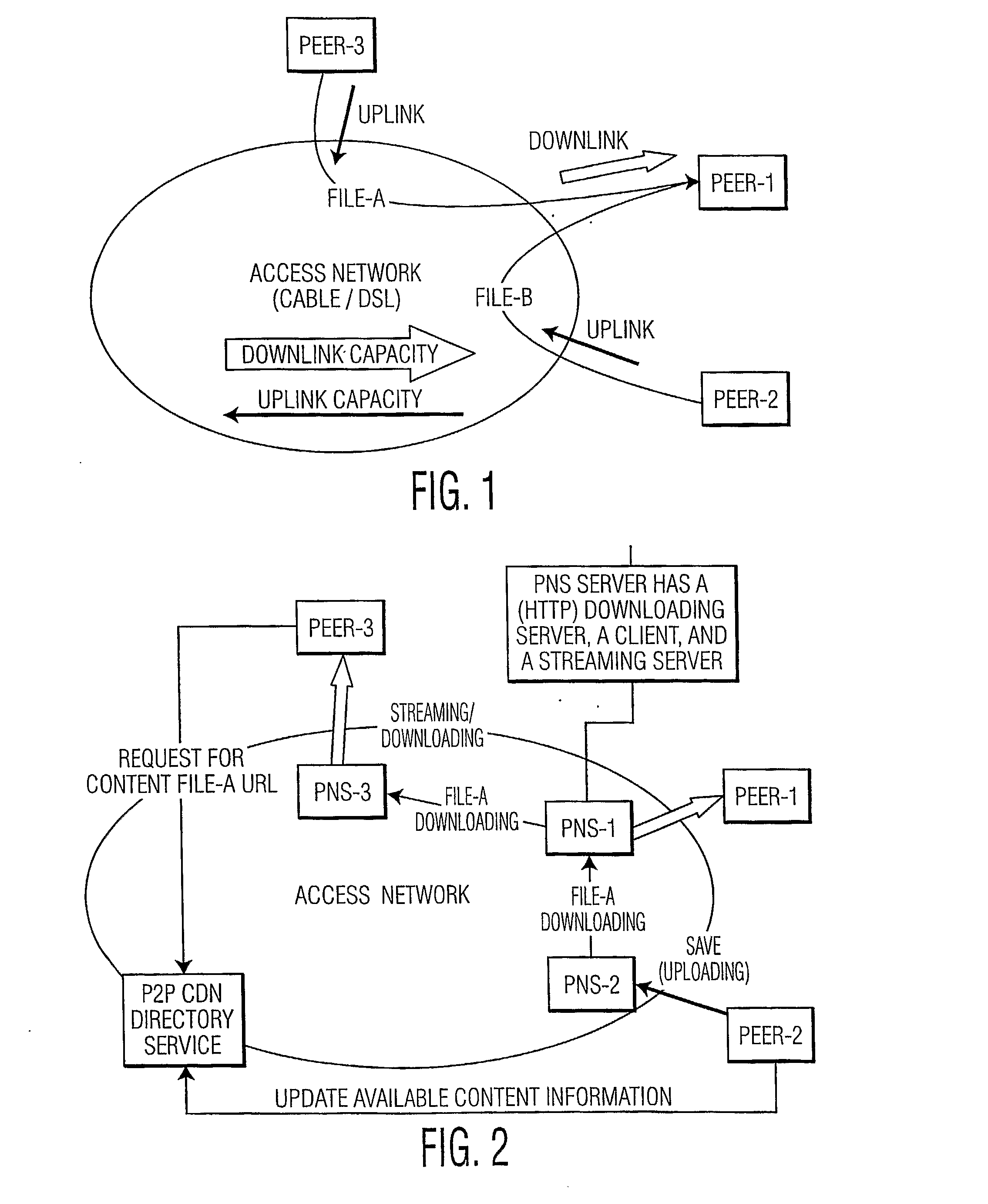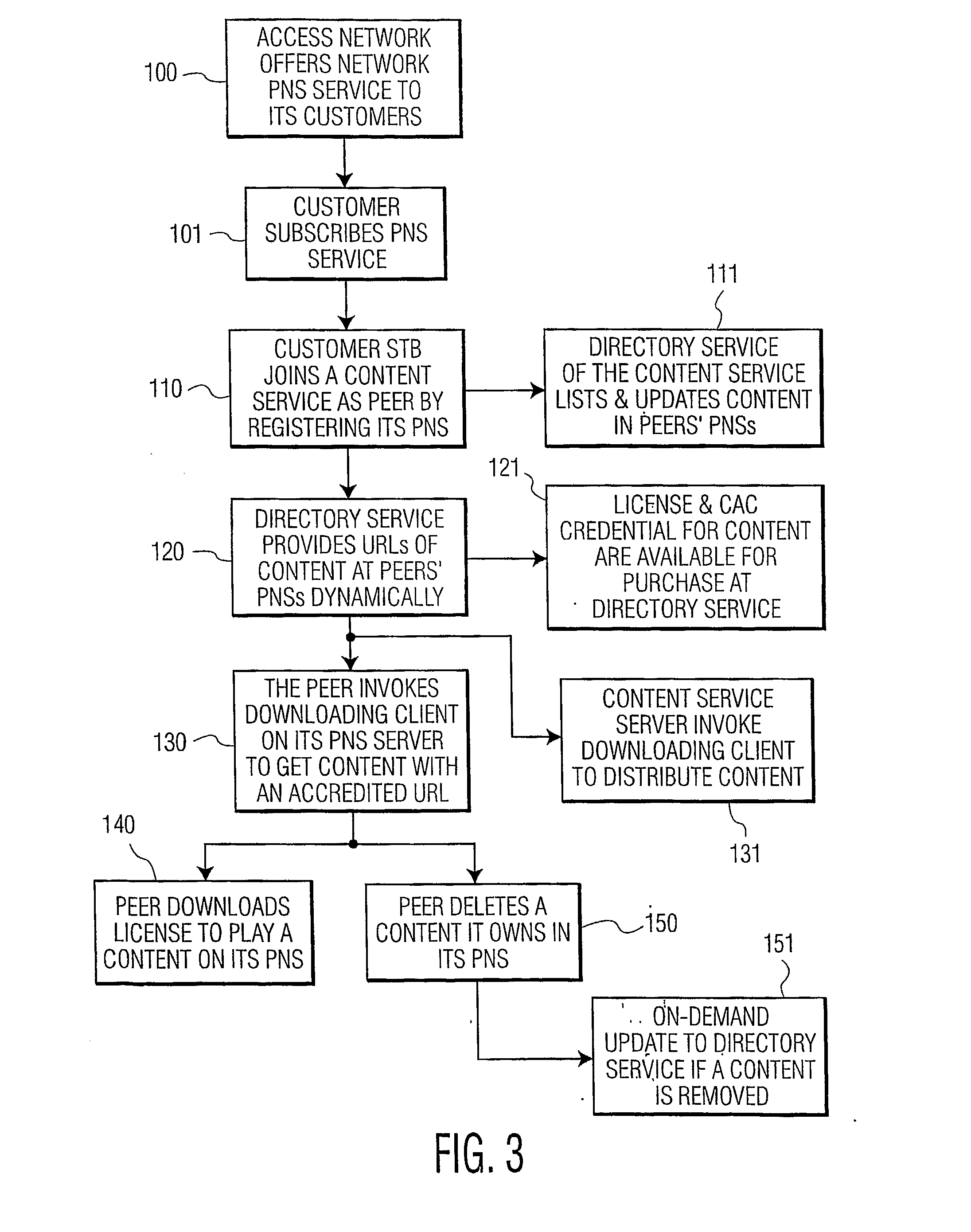Peer-to-Peer Video Content Distribution Network Based on Personal Network Storage
a video content and peer-to-peer technology, applied in the field of networkwork, can solve the problem of slow download or streaming of files, and achieve the effect of avoiding the bottleneck of uplink
- Summary
- Abstract
- Description
- Claims
- Application Information
AI Technical Summary
Benefits of technology
Problems solved by technology
Method used
Image
Examples
Embodiment Construction
[0014]Some P2P solutions have attempted to solve the uplink bottleneck problem by striping the contents into segments, so that each unit of content can be hosted at multiple peers. Pieces of content can be downloaded to a peer simultaneously from multiple peers at a combined rate of multiple uplink capacities. For example, in FIG. 1, if file-A and file-B are two parts of a unit of content, the downloading rate to peer-1 is restricted by the combined uplink capacities of peer-2 and peer-3, which can be a rate of twice as much as the maximum uplink capacity. Downloading content simultaneously from more than one peer itself does not boost overall uplink capacity, neither does it reduce the overall uplink traffic load unless the two uploading peers are in different physical networks. In 2P service for large size content, such as video, the uplink can be easily overloaded.
[0015]Personal network storage systems such as network personal video recorders (PVRs) have been used by cable compan...
PUM
 Login to View More
Login to View More Abstract
Description
Claims
Application Information
 Login to View More
Login to View More - R&D
- Intellectual Property
- Life Sciences
- Materials
- Tech Scout
- Unparalleled Data Quality
- Higher Quality Content
- 60% Fewer Hallucinations
Browse by: Latest US Patents, China's latest patents, Technical Efficacy Thesaurus, Application Domain, Technology Topic, Popular Technical Reports.
© 2025 PatSnap. All rights reserved.Legal|Privacy policy|Modern Slavery Act Transparency Statement|Sitemap|About US| Contact US: help@patsnap.com



